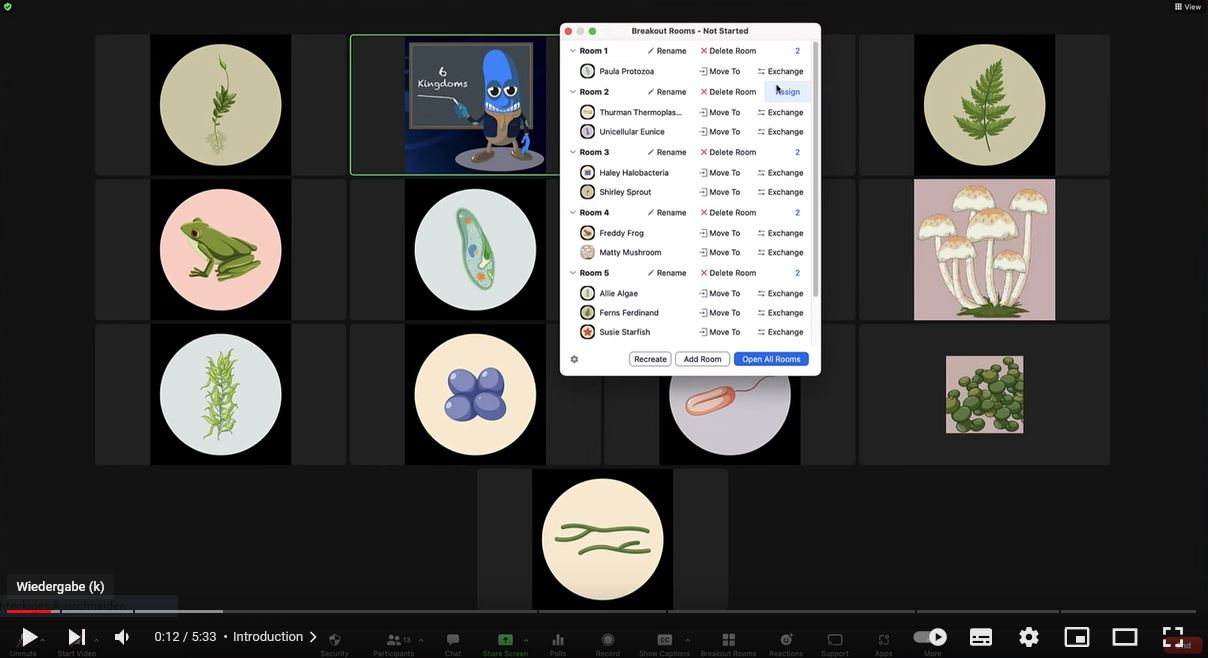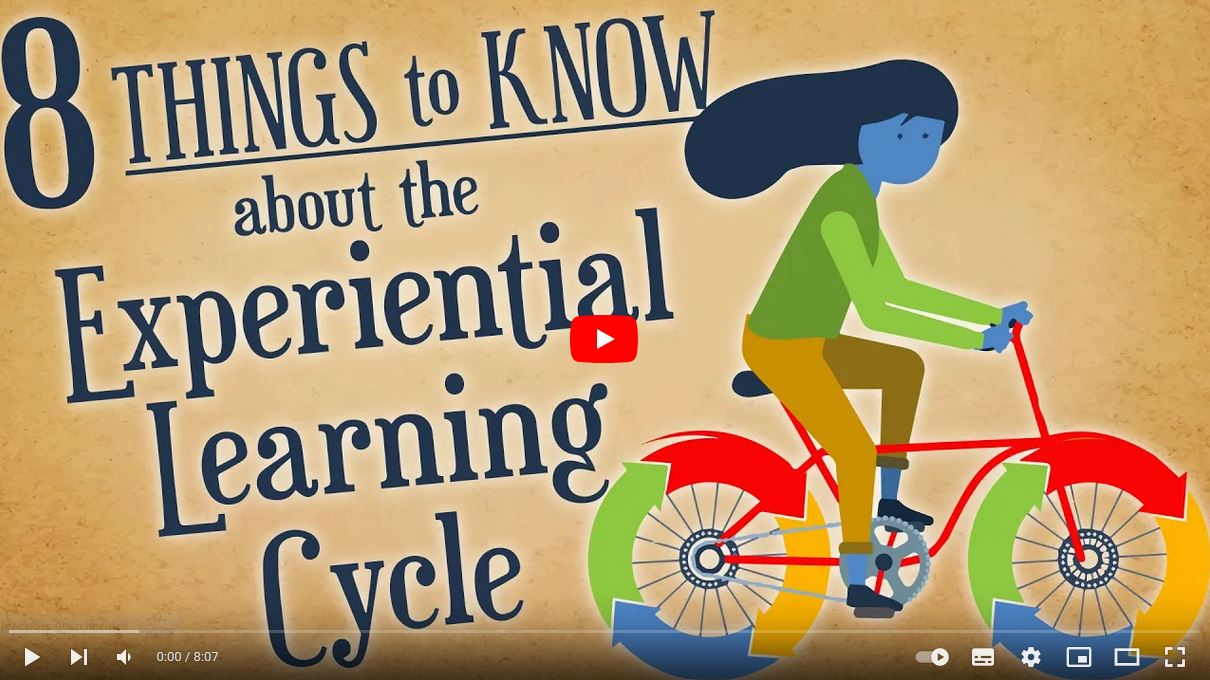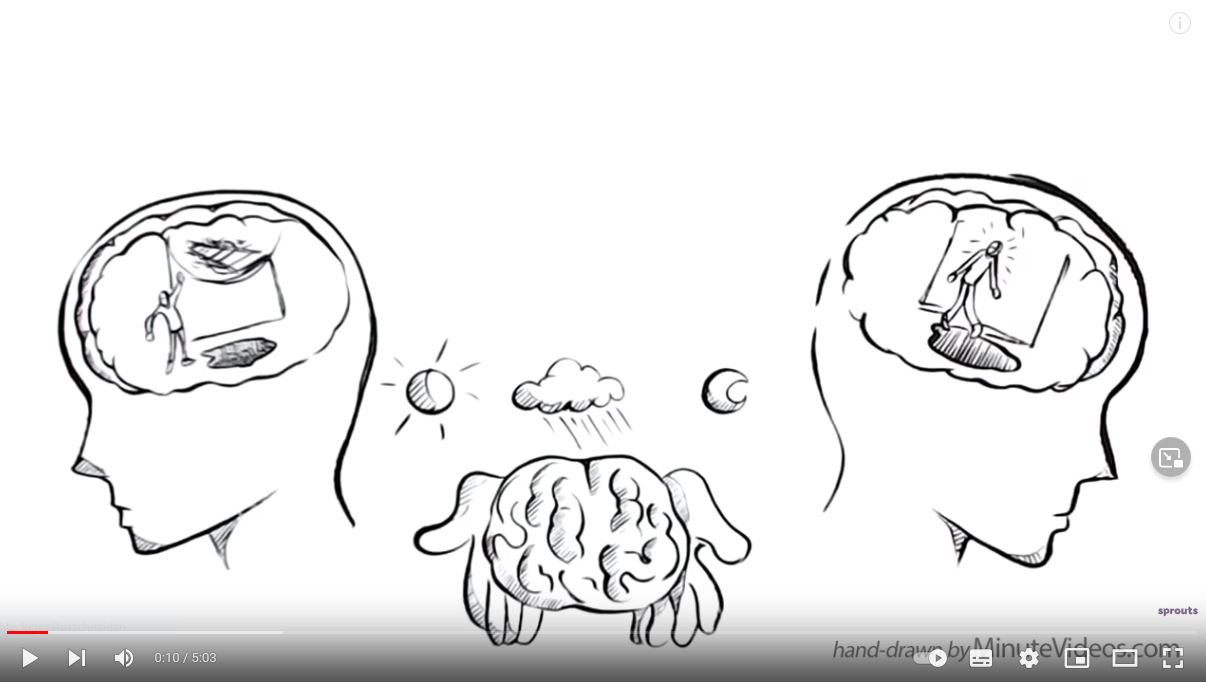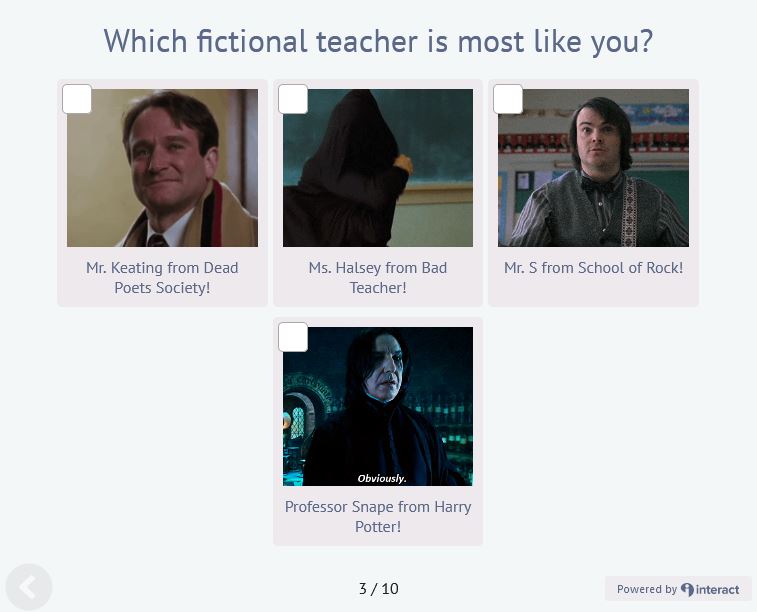Stage 4 - Share Knowledge with Your Students

Introduction
In the fourth step students and you now navigate your online course with confidence and can focus on the content of the course. Your teaching now can focus on your subject matter and let technical tools run alongside "as a means to an end". You have a lot of creative freedom to combine your content with interactive media, as your students have now developed media literacy.
In this stage, the goal is the collaborative construction of knowledge. In this stage, learners should be given the opportunity to choose the tools for their knowledge construction. Tools that support cooperative and collaborative work, such as concept or mind-mapping tools or collaborative writing tools like Etherpad, are helpful. Therefore, see out toolkit section with the online tools. In this stage your students could also work independently in break out rooms. We like this video about Using Breakout Rooms During a Meeting.
How to use your didactic paradigm
In the fourth stage of the model, it is all about knowledge transfer. If we take "online learning is not slapping classroom content online" seriously, we realise that as online teachers we should be clear about our didactic background. What models have you used to teach so far? Even if film teaching is often practice-based, e.g., camera training, a didactic concept should stand underneath the teaching of the material as well.
Why is that important to know?
Let’s talk about learning theories and paradigm:
“Just as no two people are the same, no two students learn in the exact the same way or at the exact same rate. Effective educators need to be able to pivot and craft instruction that meets the needs of the individual student to address the needs of the ‘whole child.’ Sound knowledge in multiple learning theories is a first step to this and another reason why great teachers work their entire careers to master both the art and the science of teaching.” (Pamela Roggeman, Dean of University of Phoenix’s Colleg of Education)
Well, there are five primary pedagogical theories of learning: Behaviorism, Cognitivism, Constructivism, Humanism, and Connectivism. If you want to have a brief overview about learning theories, please click here to the article 5 educational learning theories and how to apply them.
Behaviorism is an approach according to which behavior can be explained by external factors and behavioral conditioning can be used as a universal learning process. In behaviorism, the ideas of positive and negative reinforcement are effective tools of learning and behavior change, as are a penalty and reward system.
Cognitivism represents a learning theory developed by Jean Piaget that assumes an infant develops cognitive pathways to understand and physically respond to experiences. According to this theory, students tend to learn most effectively by reading texts and listening to lectures.
Constructivism assumes that humans are responsible for developing their own understanding of the world and use their knowledge from previous experiences to connect new information to those experiences. Thus, people draw on these experiences and new information to construct their own understanding of meaning. Humanism believes that behavior can be explained by external factors and that behavioral conditioning can be used as a universal process of learning. The constructive didactic can be described as a " more recent" didactic in adult education, as it has only had a strong influence on adult education since the 21st century. Methodological impulses for self-directed learning and for self-organized learning have come from constructivism. Central to constructivism is a way of thinking which the process character of reality. In this context, knowledge is regarded as a social construction on which groups of social actors rely for a certain period.
Humanism centers on the individual as the subject and assumes that learning is a natural process that assists people in recognizing who they are. Settings and examples are important factors in humanistic learning, in addition to making experiences, inquiries, and monitoring others.
Connectivism involves a new theory of learning grounded in the idea that individuals make connections as they process information. Beyond the 'traditional' learning theories (behaviorism, cognitivism, constructivism), learning 2.0 and lifelong learning, there are references to a new approach to learning theory: connectivism. Evolving with the digital and technological age, this theory adapts to advances in these fields. Specifically, this new theory posits that students will not stop learning after formal education, but will acquire knowledge in other ways, such as vocational skills, connectivity and learn with new media. The learning theory of connectivism is of specific relevance for media didactics.
Other learning theories include transformative, social and experiential, which could be for the film education of significance. Watch more in the video 8 Things To Know About the Experiential Learning Cycle:
The role of facilitators in online classes
Now let’s speak about YOU. Your role as facilitator is based on the concept of process guidance. Online teachers can view their role here not as omniscient experts, but also as learning persons in the context of the teaching/learning arrangements. It is crucial here that the content design of learning is oriented towards the resources of all persons involved in the learning process. The main responsibility of the facilitators is to give the learners the respective individual support to enable the further development of their competences in relation to self-directed learning. According to Malcom Knowles four optional teaching strategies can be applied:
- Individual meetings before the start of the course and during the course, with the aim of coordinating the content of the self-study,
- formation of small groups (teams) for the joint development of projects,
- conducting workshops to develop needs analyses in relation to the self-directed learning processes, drawing up individual learning plans with learning activities, evaluating learning outcomes,
- or alternatively, conducting a session prior to the start of the course to conduct exercises on teaching/learning relationships, proactive use of existing material resources, and proactive use of human resources.
The major difference with other similar concepts, according to Knowles, is that these very often assume learning in isolation, while self-directed learning is characterised by interaction with others. Knowles states: "[S]elf-directed learning usually takes place in association with various kinds of helpers, such as teachers, tutors, mentors, resource people, and peers. There is a lot of mutuality among a group of self-directed learners. " (Knowles, Malcolm. S. (1975). Self-directed learning. New York (NY): Association Press, p. 18.)
In this context, Knowles has identified two types of learners who are distinguished from each other by different attitudes and courses of action, while also connoting differences in terms of learning outcomes. Individuals who see the instructions of teachers as central to being able to learn are mostly characterised by the expectation of being taught and are rather passive in initiating their learning processes independently and on their own responsibility. Knowles speaks of reactive learners in this context. People who start their individual learning processes with a high degree of initiative and motivation are called proactive learners in Knowles' terminology. In Knowles' sense, a proactive attitude with regard to one's own learning processes corresponds to an attitude that is characterised by personal responsibility and autonomy and corresponds to or characterises the developmental phase of adults. About the learning outcomes, differences in the effects become clear: The learning outcomes of Proactive Learners are more sustainable and application oriented.
Being a facilitator implies a situation-adequate switching between learning process guidance, imparting expert knowledge and learning together with the students in different nuances. And being an effective online facilitator comes easy to some, but there are always ways to grow. Whether you want to be an efficient facilitator or make your online lessons brighter, here are some great online teaching strategies that can help you make your classroom more vibrant. The article Establish a Positive Teacher Presence in Your Virtual Classroom shows you how to set up a successful online teaching presence. This article is also available as podcast.
You might also be interested in hearing about the mindset of teachers. The article Growth mindset in education deals dealing with the following questions:
- What is a fixed mindset versus a growth mindset?
- Why are these two concepts important in education?
- How does this affect or impact student improvement or achievement in school?
- Why should teachers be concerned about their mindset and their students’ mindset?
We recommend to watch this video Growth mindset versus fixed mindset about developing a growth mindset as teacher.
To keep developing your teacher personality is important to reflect on ourselves, our role as teachers and educators and the teaching styles we approach.
Quiz: What's your teaching style?
Great! You have already created a dynamic and inspiring way to share your knowledge. Your course is running well, and everything is running smoothly,, so now it is time for the vital final STAGE 5 - DEVELOPMENT.




